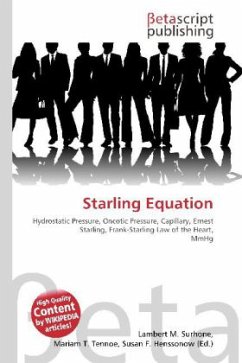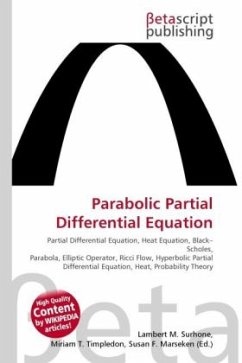Please note that the content of this book primarily consists of articles available from Wikipedia or other free sources online. The Starling equation is an equation that illustrates the role of hydrostatic and oncotic forces (the so-called Starling forces) in the movement of fluid across capillary membranes. Capillary fluid movement may occur as a result of two processes: diffusion filtration Starling''s equation only refers to fluid movement across the capillary membrane that occurs as a result of filtration. In the glomerular capillaries, there is a net fluid filtration of 125 ml/min (about 180 litres/day). In the rest of the body''s capillaries, there is a total net transcapillary fluid movement of 20 ml/min (about 28.8 litres/day) as a result of filtration. This is several orders of magnitude lower than the total diffusional water flux at the capillary membrane, as that is about 80,000 litres/day. The Starling equation was formulated in 1896 by the British physiologist ErnestStarling, also known for the Frank-Starling law of the heart.







